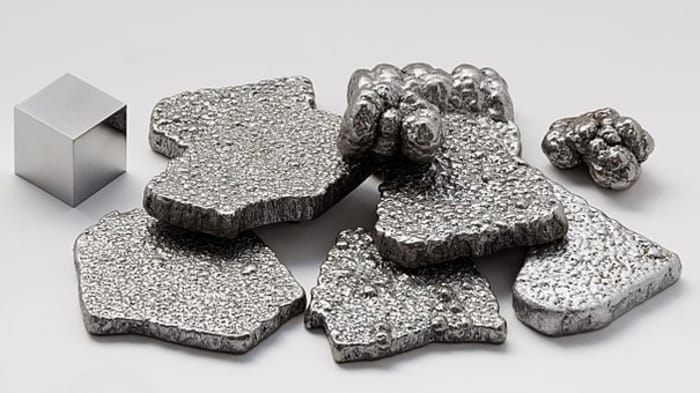Iron and chlorine as simple substances, and their interaction
Properties of iron and chlorine, how they interact

In this article, we will examine iron and chlorine, and also the reaction of these two substances.
Iron is one of the most abundant metals in the Earth’s crust. This metal has been known from ancient times, and it would probably be impossible to imagine human life today without iron, which is used in large-scale production and takes part in the humans' and animals' biological processes.
Physical properties of iron

In pure form, the metal is quite malleable, but certain additives can increase its brittleness or strength. Iron has a dark silver color and actively displays magnetic properties. Iron is a high-melting metal and displays medium chemical activity.
The metal melts at the rather high temperature of 1539 °C and boils at 2862 °C.
Chemical properties of iron

Metallic iron reacts with water vapor only at a high temperature of up to 800 °C. Mixed iron oxide Fe₃O₄ and hydrogen form. Iron also reacts quite well with diluted nitric acid. It can also react with halogens when heated, with air, with non-metals etc.
What is chlorine?
Chlorine is a chemically active substance which under standard conditions is in a gaseous state, and this gas has an acrid smell and a yellowish tinge. If iron is one of the most abundant metals in the Earth’s crust, chlorine is the most abundant halogen. It also takes part in important biological processes of all living creatures on Earth.
Chlorine is heavier than air and is widely used in industry. In pure form, the 17th element is toxic to humans and causes suffocation if it enters the lungs.
This suffocating gas boils at a temperature of -34 °C and melts at a temperature of -101.5 °C.

Chlorine reacts readily with non-metals, forming chlorides. For example, the equation of the formation of phosphorus chloride is:
3Cl₂ + 2P → 2PCl₃
Chlorine reacts with hydrogen. Hydrogen chloride forms, which when diluted with water gives strong hydrochloric acid:
H₂ + Cl₂ → 2HCl
Chlorine has quite a spectacular reaction with antimony powder. Antinomy is a semi-metal, or a metalloid. If heated antimony powder is added to chlorine gas with a special spoon, flames, sparks and a thick white smoke of antinomy chloride will form at the bottom of the flask:
2Sb + 3Cl₂ = 2SbCl₃
This substance can enter into a reaction with almost all metals.
Let us examine the reaction with one of the active alkalis - potassium. The heated metal burns in chlorine, and potassium chloride forms:
2K + Cl₂ = 2KCl
With low-active metals, for example copper, chlorine also reacts, forming copper(II) chloride.
Cu + Cl₂ → CuCl₂
But the reaction with iron is especially violent – let’s examine it. This experiment can only be carried out in a laboratory.
For the experiment we will need:
- iron rod;
- gas burner;
- chlorine.
As we said, chlorine is heavier than air, so for the experiment, it can be stored in an open flask. The reaction takes place with an iron heated up to 200 degrees, so the rod should be heated with the burner. Then lower the rod into the greenish gas, and observe an immediate violent reaction: the chlorine oxidizes the iron to a trivalent state. The reaction is accompanied by the release of toxic brown fumes, and crystals of iron chloride start to form in the flask:
2Fe + 3Cl₂ = 2FeCl₃

Warning! Before conducting the experiment, get to know with safety rules, wear protective gloves and a mask. Do not breathe in the chlorine and the brown fumes that form! Iron chloride has the formula FeCl₃ and consists of small yellowish crystals, which dissolve well in water. Iron chloride is used for industrial purposes, for example for water purification. The substance is toxic.